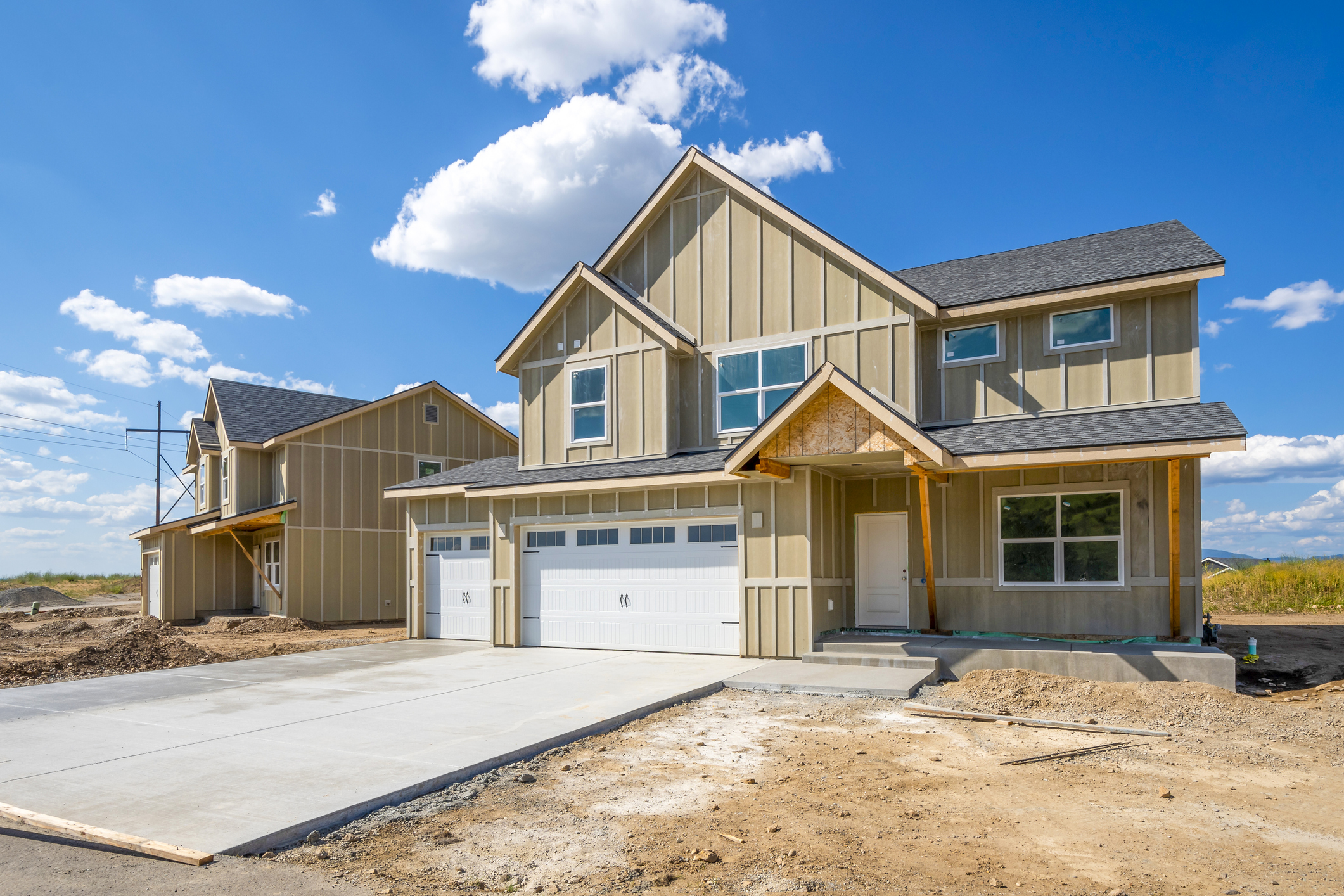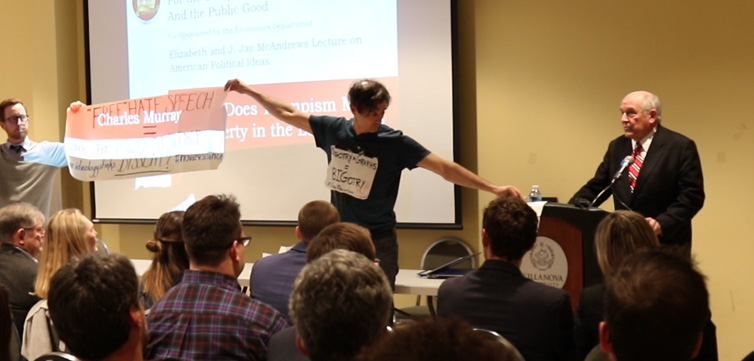Chuck Grassley throws the red flag.
Solving the Global Housing Crisis

The worldwide lack of affordable housing can only be resolved politically.
The global housing crisis across the high-income world, particularly in the Anglosphere, represents perhaps the single biggest challenge to the future of the middle class. From the United Kingdom to Australia, an entire generation is facing a future that will preclude even those with decent incomes from ever owning a house or acquiring assets.
At the heart of the problem lies ever-growing land prices. According to the Organization for Economic Co-operation and Development (OECD), housing prices have risen “three times faster than household median income over the last two decades.” OECD concludes, “housing has been the main driver of rising middle-class expenditure.” Rising rents are a smaller, but still significant, part of the problem because of their strong relationship to housing prices.
Despite the recent drop in home prices, home affordability in the U.S. is at the lowest level in at least three decades. Similar trends have driven homeownership down in the United Kingdom, Australia, and Canada as well.
The young are most affected. According to Census Bureau data, the rate of homeownership among young adults ages 25 to 34 was 45.4 percent for Generation X, but dropped to 37 percent for millennials, the generation now entering the prime family-formation years. In Australia, 50 percent of those born in the fifties and early sixties bought their first home by the age of 30, while for younger Australians born in the nineties, this number has fallen to 36 percent—despite the availability of several government-backed schemes to encourage first-time homeowners, programs which did not exist for boomers. Much the same pattern exists in the United Kingdom and Canada.
The future increasingly offered to young people is not buying a home or row house that would be good for families, but remaining renters for life. In some places homeownership is rapidly becoming an impossible dream. In California, which has among the lowest homeownership rates in the country, according to one recent study the median family in San Jose or San Francisco would need 125 years (150 in Los Angeles) to save enough for a down payment. What used to be the normal American benchmark of homeownership is almost gone for increasing numbers of people, particularly for the young and blue-collar workers. According to a recent study by economist John Husing, not one unionized construction worker can afford a median-priced home in any coastal California county.
The Fruit of Failed Policies
The good news is that these problems were largely caused by policies which can be reversed. There is no land shortage in the U.S, or in England, Australia, or Canada. Urbanized land in the United States is less than three percent of the total, which is about the same in Canada, according to government statistics, even when you exclude the tundra belt. Australia is even more empty. The U.K., by far the most crowded, is only ten percent urban.
Many countries, as well as local jurisdictions, particularly in the English-speaking world, generally undermine housing affordability. These widely-imposed, detrimental policies include “urban growth boundaries” and greenbelts that restrict new housing on the fringe. According to research by demographer Wendell Cox, virtually all the most expensive places in the English-speaking world follow such an approach. In addition, high fees, the imposition of “prevailing wage” rules that set union wages as the floor on development, and forced solarization and electrification of virtually everything contribute to higher prices. According to the Housing Industry Association, by 2022 these taxes and regulatory costs accounted for 50 percent of the price of a new dwelling in Sydney.
In some places like California and Oregon, single-family zoning is essentially banned. Meanwhile Wall Street firms like Blackstone and Britain’s Lloyds Bank increasingly buy homes in hot markets, turning them into rentals and simultaneously boosting home prices. Roughly 70 percent of Americans see homeownership as essential to entering the middle class, but like their counterparts in other English-speaking countries, their chances of achieving it today are vanishingly small.
The Siren Song of Densification
Some real estate professionals and planners, along with their YIMBY (“Yes In My Backyard”) allies, claim that forced densification can best address housing shortages and reduce prices. Prestige outlets like the New York Times blame suburbs and suburban NIMBYs for shortages and high prices. Many in the media back this notion and suggest, like the corporatist Financial Times, that residents in the Anglosphere “get used” to living in ever-smaller apartments. One YIMBY report suggests densification of the entire New York region in order to double its current population, now at 20 million. It gleefully embraces the idea of returning to the kind of densities many of our forebears endured, and later happily left behind.
It is estimated that the U.S. housing market is short about 6.5 million homes, but enforced densification does not seem to be the best solution for most people. Wherever these policies have been imposed, housing prices and rents have risen out of control, far faster than incomes. This is particularly true in highly regulated parts of the United States, most particularly California, the coastal areas of Australia, and Toronto and Vancouver. In all cases, conscious policies of urban containment, where new affordable housing on the fringe is discouraged, are to blame. This phenomenon can be seen in Canada, as housing costs in both Vancouver and Toronto have more than doubled relative to incomes since 2004.
One thing these policies fail to do is produce many houses. Anti-suburban regulation has caused California home production to consistently underperform compared to the nation as a whole. Los Angeles, for example, ranks near the bottom of all metros in home construction, but other big California metros don’t do much better. Throughout the past decade, developers have found it far easier to build in places like Texas, Florida, Nevada, and Arizona than in California, or in Kitchener-Waterloo, Guelph, or Peterborough than in Toronto.
In addition, building dense housing tends to be expensive, both from the perspective of building costs and land costs. Going from five to ten stories increases the cost of each square foot by over 50 percent, notes the Manhattan Institute’s Judge Glock, in large part due to the need for using more expensive, energy-hungry materials like steel.
And then there is the little factor of people’s preferences. There has long been a niche market for dense urbanism, particularly among the young. But despite this, in the U.S. two-thirds of millennials before the pandemic favored suburbs as their preferred residence, a trend that appears even stronger today. Al Gore has been attacking “suburban sprawl” since 1999, but even in highly-regulated markets, people continue to vote with their feet, consistently shifting toward suburban, lower-density areas.
A recent study by the real estate consultancy London Moeder found that in San Diego, for example, the vast majority of new units tend to be small one bedroom or studios, built in part to follow state guidelines and serve a growing millennial population. Yet, as the study suggests, as millennials enter their 30s and 40s, demand has shifted to building larger units that can accommodate married couples and families. Under current regulations, those families are likely to be disappointed.
Looking for Answers
If we want to promote denser development, there is no need to invade single-family neighborhoods. Builders should instead look to convert huge amounts of redundant retail and office space to residential living. Not all of these spaces can be converted, but some, particularly low-rise malls, could be transformed into somewhat affordable units. And there is plenty of developable land on the periphery.
Yet the big play is exactly the one today’s progressive greens hate—expansion of the fringe. Just as the Levitts and others used techniques developed during World War II to build affordable tract houses, today new technologies could allow for cheaper construction, while the rise of online work and dispersion of jobs to the periphery make development along the fringe areas ever more feasible. Roughly 40 percent of all California jobs, including 70 percent of higher paying ones, could be done at home, according to research by the Center of Jobs and the Economy.
As people move from expensive metros like Los Angeles and San Francisco, regions and states should institute a more liberal planning regime in peripheral areas, as Wendell Cox and I have proposed for places—like Southern California’s Inland Empire, east of Los Angeles—where land is considerably cheaper than on the coast, flat, and not susceptible to fire dangers. We have proposed that if the urban core areas wish to retain strict regulations, a “housing opportunity zone” on the periphery could adopt more liberal policies, opening the way to new, more affordable, development. Similar approaches could also apply to other land-rich countries like Canada and Australia. At the same time, new manufactured housing technologies, already in place, including using 3D printers, could drastically reduce the cost of construction.
The Political Challenge
Ultimately the housing crisis can only be addressed politically. The leading advocates of density—epitomized by YIMBYs—tend to be young, relatively affluent progressives who, at this stage of life, understandably want to live affordably in their preferred urban locales. Backed by urban land speculators, tech firms, and greens, they have little interest in expanding middle- and working-class lower-density developments. They continue to extol bold plans to expand high-cost, multi-family housing, even as many of these areas continue to lose population.
This poses political risks, as evidenced by the defeat of forced densification plans advanced by New York Governor Kathy Hochul. In California, according to a poll by former Obama campaign pollster David Binder, there is marked opposition to legislation that bans single-family zoning. The preference for single-family houses, in California and elsewhere, is “ubiquitous” according to recent research by Jessica Trounstine at the University of California, Merced. Across every demographic subgroup analyzed, she observes that “respondents preferred single-family home developments by a wide margin. Relative to single-family homes, apartments are viewed as decreasing property values, increasing crime rates, lowering school quality, increasing traffic, and decreasing desirability.”
The odd alliance of the progressive YIMBY Left and the libertarian Right threatens what was once a bipartisan commitment to the aspirations of middle- and working-class families. This approach characterized Democrats from the New Deal to Bill Clinton, Australian Labour under John Curtin, and even British Labour under Clement Attlee—these parties were similarly committed to building expansive housing on the fringe. “Has there ever been such a stealthy social revolution as the rise of this semi-detached suburbia?” noted English filmmaker John Boorman in his memoir, Adventures of a Suburban Boy.
The Green Gambit
Increasingly unable to suggest that most people actually want to live in dense communities, opponents to affordable suburban housing now resort largely to environmental arguments, suggesting that dense development is better suited to meet the challenges associated with climate change. They also insist that the real problem with affordability lies in the unwillingness of suburban dwellers to accept mass densification in their communities, and repeatedly claim that suburbanization reflects a form of racist “white flight.”
Much of this barely stands scrutiny. In the past, much suburban development discriminated against African Americans and other minorities, as also occurred in urban neighborhoods. But today suburbia is where integration is expanding more robustly. In the United States, the majority of ethnic minorities live in suburbs, accounting for virtually all the suburban growth over the past decade. Suburbs also have become a preferred locale for Australia’s immigrant population, just as they have in Canada and the United Kingdom.
Opposition to suburbs on environmental grounds is also increasingly outdated. Indeed this is even the case with the rise of online work and the meager use of transit, even in big cities outside New York. According to projections by the Terner Center at UC Berkeley, working under the assumption that housing development would be limited to infill (no greenfield development), the GHG savings of 1.8 million tonnes would contribute only one percentage point to the mandated state reduction by 2030.
In addition, the rise of remote work offers a way to cut suburban emissions. The International Energy Agency suggests that if everybody able to work from home worldwide were to do so for just one day a week, it would save around one percent of global oil consumption for road passenger transport per year, an annual decline of 24 million tonnes (Mt)—equivalent to the bulk of Greater London’s annual CO2 emissions.
Equally promising, many new suburban areas, as MIT professor Alan Berger suggests, are being designed in consciously more sustainable ways. Advances in technology, such as using innovative materials and creating sophisticated systems for controlling energy and water use, make suburban and exurban communities ever more environmentally sustainable. Well-planned new developments could reduce greenhouse gases by using rooftop solar systems, electric cars, and, eventually, autonomous taxis. And with their ample open space, these areas are ideal for enhancing biodiversity through thriving populations of insects, birds, and small mammals.
Rather than competing for ways to reduce the middle class and squash working-class aspirations, people on both sides of the political equation should embrace policies that encourage expansive, as well as sustainable, housing opportunities. The winner of that contest would surely deserve the support of a grateful polity.
The American Mind presents a range of perspectives. Views are writers’ own and do not necessarily represent those of The Claremont Institute.
The American Mind is a publication of the Claremont Institute, a non-profit 501(c)(3) organization, dedicated to restoring the principles of the American Founding to their rightful, preeminent authority in our national life. Interested in supporting our work? Gifts to the Claremont Institute are tax-deductible.
Is California turning on its Jews?
American prosperity demands that we build for our future.
Kamala Harris’s birthplace shows the wrong way for American cities.
A look at the Great Migration of the twenty-first century.
The Democrat standard-bearer is whatever her bosses order her to be.






